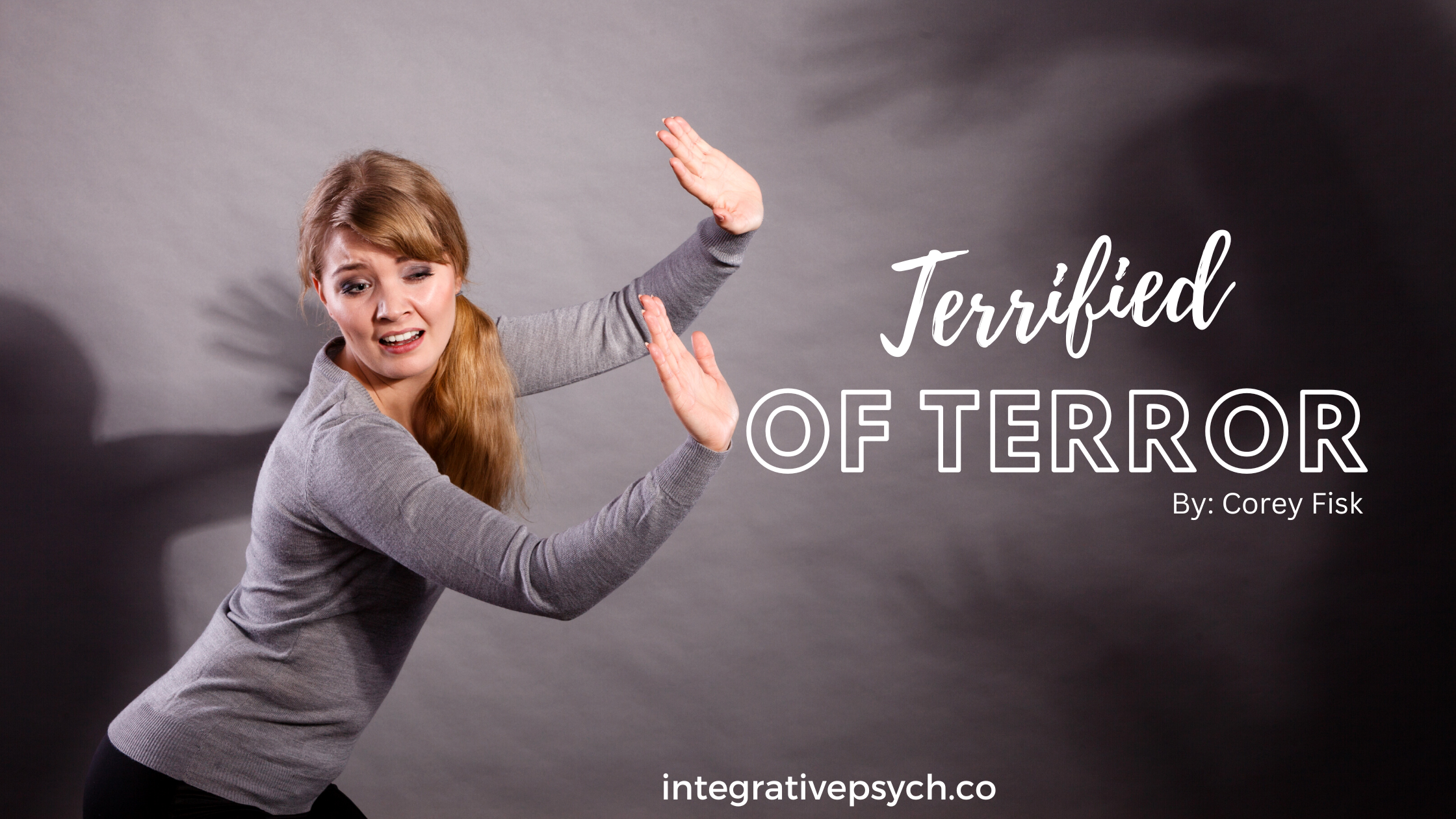Terrified of "Terror"? Here's Why!
Action cures fear; inaction creates terror.” - Douglas Horton
It’s that time of the year again. The leaves start falling to the ground and the day turns to night earlier and earlier. Decorations are popping up all around town of creepy images, with the aim to make fun and light of being scared. Gently tip-toeing the scary line on our own accord, like watching a scary movie, can be fun at times! However, what happens when we are exposed to frightening situations out of our control that we are not prepared for?
Terror is an emotion that most people spend their entire lives avoiding.
One can get no closer to danger than experiencing terror. Many people organize their lives in order to avoid that level of fear, consciously or unconsciously. For example, an internalized fear of scarcity leads one to overwork; a near drowning experience leads a person to avoid swimming for a lifetime. You may think, “Yes of course this makes sense- experiencing fear is unpleasant! Why wouldn’t you avoid swimming?” However, if we examine more deeply, it is not the trigger (e.g. swimming) that we are avoiding, it is experiencing the feeling of terror. Therefore, the terror evolves into something of a mystical beast. It is so meticulously avoided that when it appears, the entire nervous system goes into crisis.
Terror is an emotion similar to joy, rage, sadness, or grief.
It activates the nervous system: ramping it up, peaking, and then softening.
It is often described as extreme fear, feeling in danger, loss of safety, a heart attack, or that someone is afraid that he/she/they may die. Terrifying memories are typically categorized by the mind and body as too overwhelming, causing a crisis. Research has shown that trauma memories bypass space-time rules – the body becomes hijacked and responds the same way as if the traumatic experience was happening all over again. As a result, a house of cards is constructed, held together with protective factors (deflection, avoidance, dissociation, addiction, rumination, obsession, anxiety). A belief is often formed that if the terrifying memories are brought to life, the house of cards (our lives as we know it) will crumble.
With this amount of power over our lives, I began to wonder:
…..what would happen if we gently began cozying up to our terror?
Practicing therapy, I watch people skirt around terror through a variety of maneuvers. However, every once in a while, it will flash for a moment, and it appears sometimes like this: little eye contact, looking away wide eyed, silent or stuttering, and tense muscles. I gently comment with a “breathe” and “I’m right here with you” and the person reorients. Often patients are unable to describe the experience and will deflect. I make a mental note. For if I can tune into what someone is terrified of, I can make space for them to work up the courage to sit with that emotion and hopefully reduce its power over them.
While Terror Is An Uncomfortable Emotional Experience,….It’s Important To Remember That You’re Not In Actual Danger
It is a life changing experience to [finally] allow your terror to roll through you, in the appropriate setting. I try to provide a supportive presence by reminding you that you are not in danger and shepherd you out the other side. If you have an inkling that you are terrified of something (a memory, abandonment, stagnation, rejection, success) or you are experiencing some of the somatic symptoms mentioned earlier, I recommend seeking out a psychotherapist who specializes in anxiety and trauma.
Exploring terror on your own is intimidating , so having a trusted professional guide you through the process can make a significant difference. Reducing terror’s deeply rooted power over you will ultimately lead to a more healthy and happy life.

